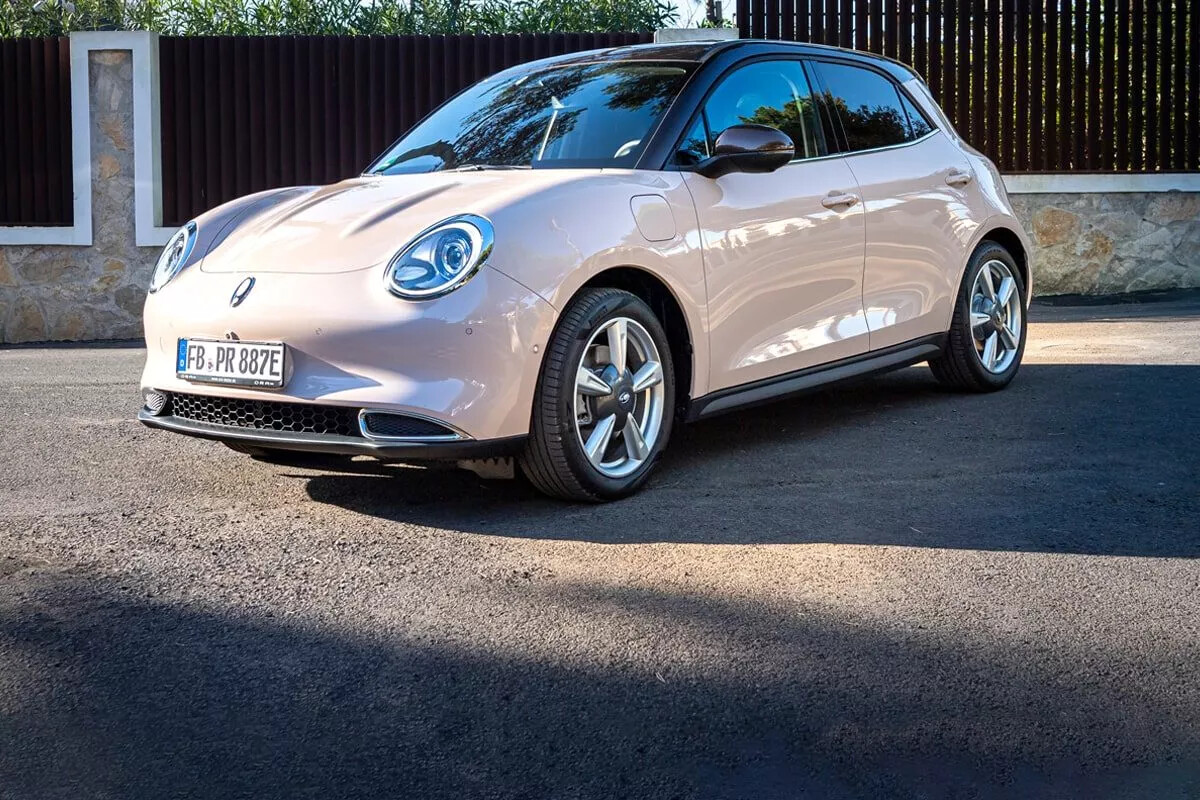
Ora Funky Cat first drive: Where the wildcat wants to roam
Ora, which stands for Open (as in open to new things), Reliable and Alternative, is the next Chinese brand after Nio to enter Europe’s electric car market. The model name Funky Cat stands for ‘extraordinary companion’ in Ora’s world. By European standards, the car’s design is just as unusual as its name.
Great Wall promotes the electric compact car in ID.3 format as an urban lifestyle vehicle in “futuristic retro design”. The pictures that were shown at the car’s premiere have now become a reality, and with the car’s round proportions and headlights, the model looks like a not-too-distant relative of the VW Beetle, with a dash of inspiration from the Mini. Although the Funky Cat measures around 4.24 metres in length, 1.83 metres in width and 1.60 metres in height, this car’s shape makes it look very compact.
When seeing the car in right front of me, I soon lost my first prejudice because I quickly took a liking to the look. Especially the two-tone Galaxy Beige/Brown Solid finish. And who can say no to that droll front end accentuated by the large headlights? Well, tastes differ, as we all know. The only thing I still can’t get used to is the typically Asian, playful logo.
As I walked around the car, the quality of the workmanship soon became apparent. I opened the driver’s door and was amazed at the comfortable seat, adjusted to my height (1.90 metres). For a compact car, there is a lot of space. Without further ado, I also sat in the back seat and found that I had enough legroom and could sit comfortably. Four adults can definitely travel in the Ora Funky Cat in a relaxed manner.
To the touch, the materials used feel good everywhere, front and back – whether it be the quilted door panels, the dashboard or the toggle switches for climate control in the centre console, which we know so well from a Mini, one may actually speak of premium quality here.
Driving pleasure thanks to the “go-kart” feeling
Back in the driver’s seat, you won’t find a start button. I started the car with a regular car key. Under the bonnet is a permanently excited synchronous motor with an output of 126 kW, which drives the front wheels. Ora states the top speed at 160 km/h. By comparison, the Mini Cooper SE has an output of 135 kW and a top speed of 150 km/h.
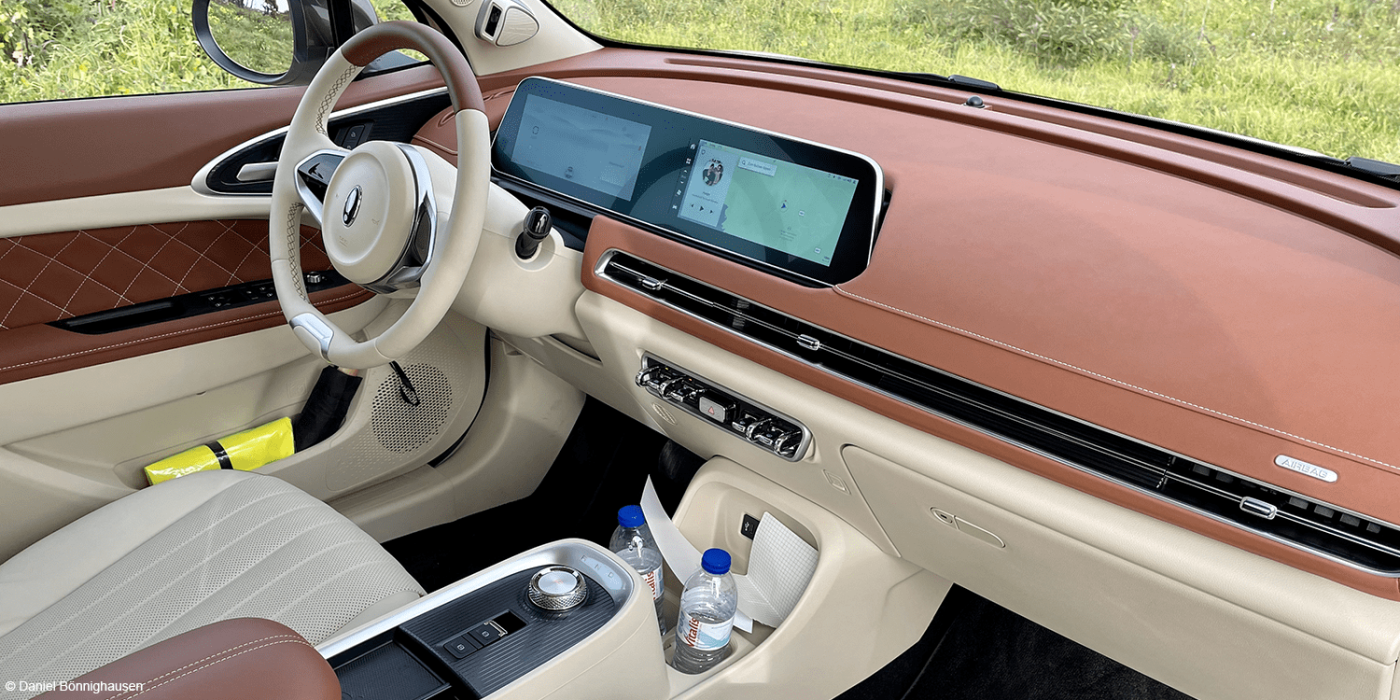
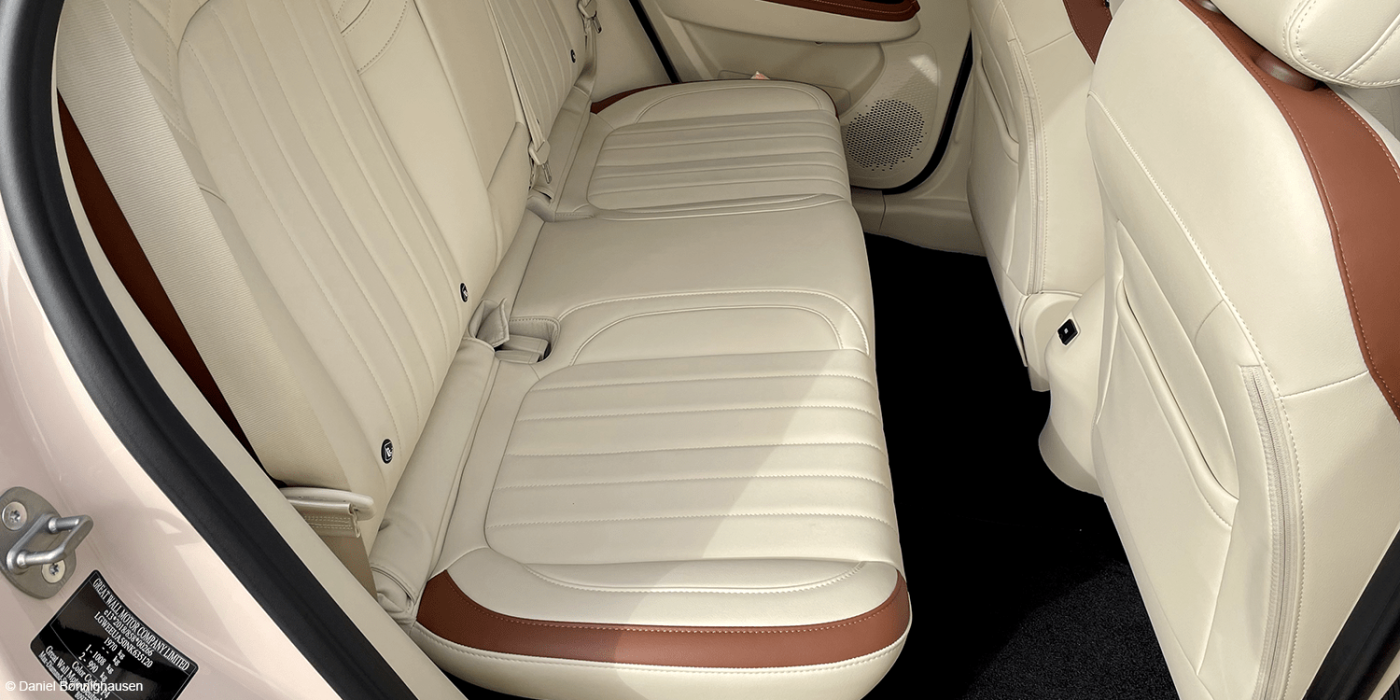
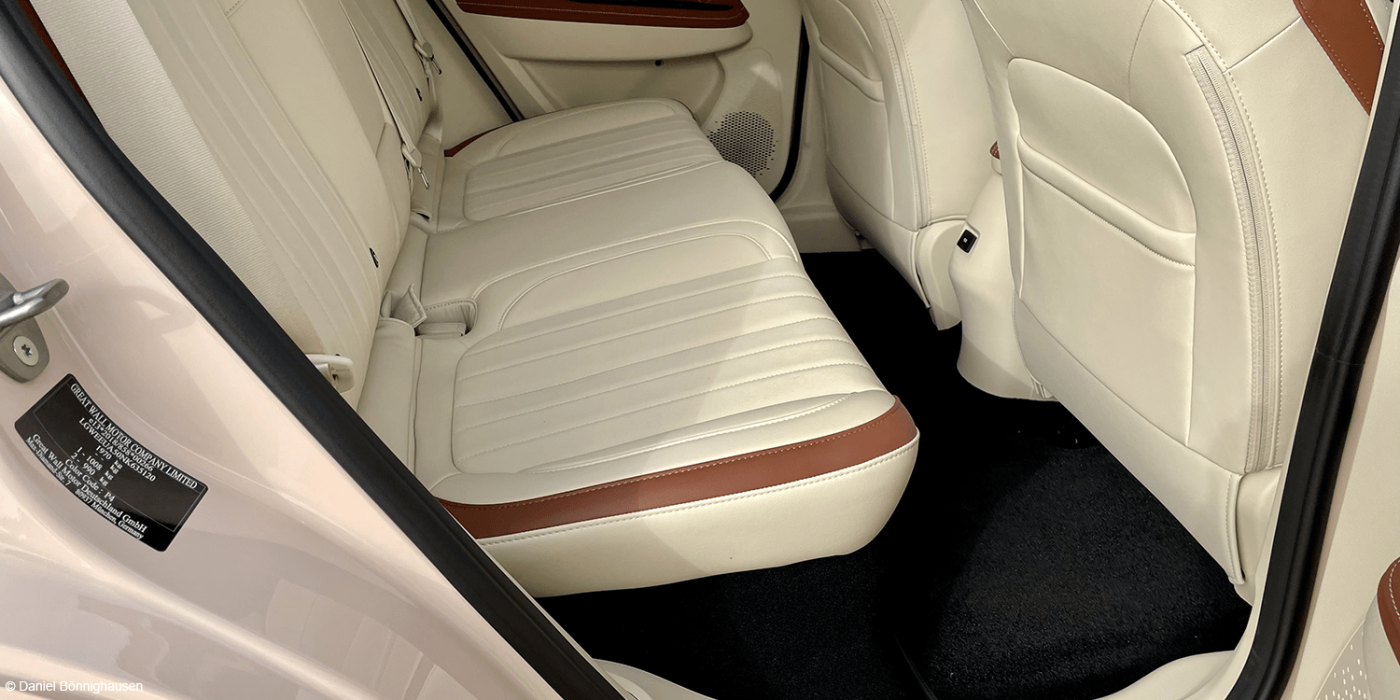
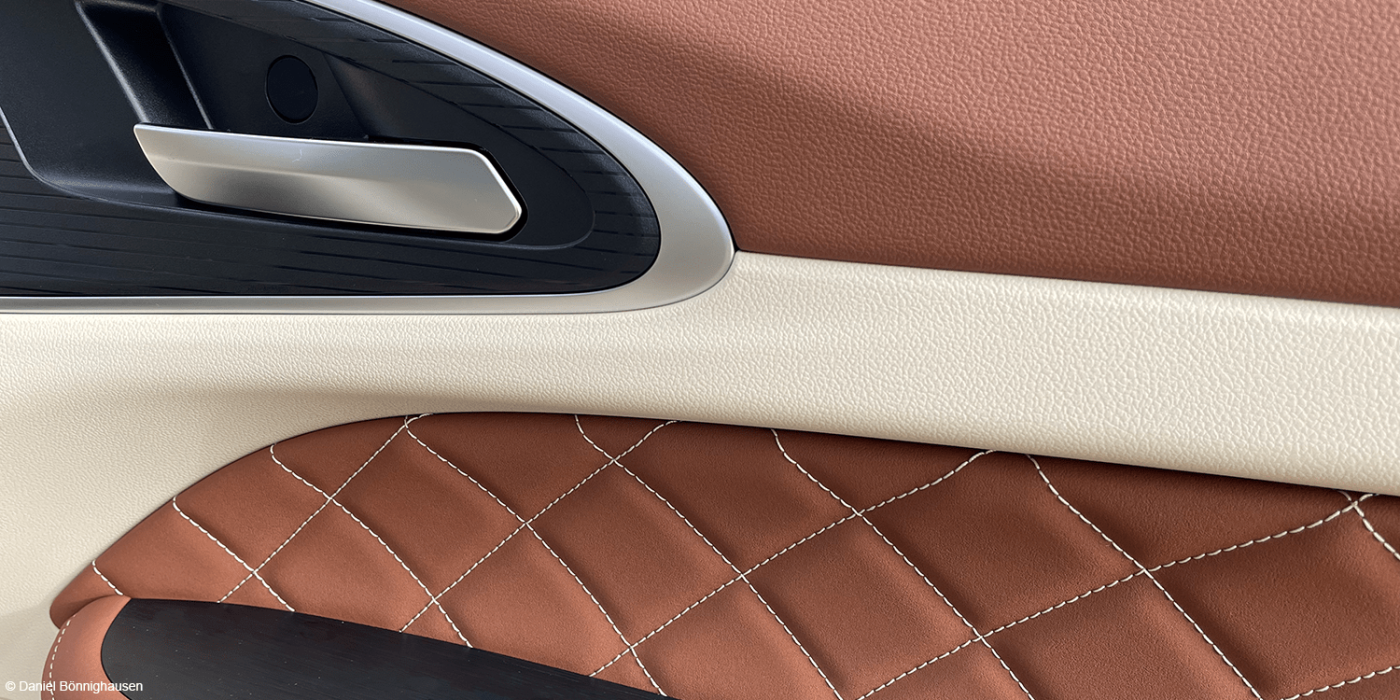
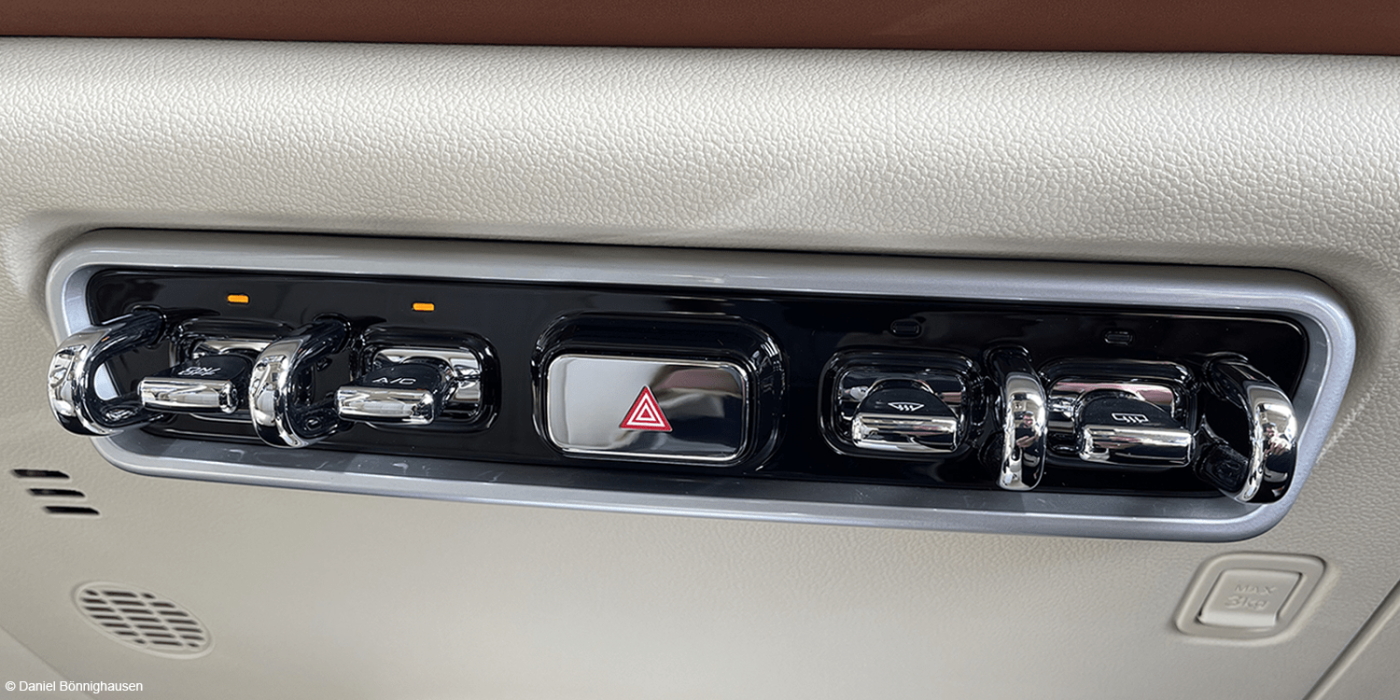
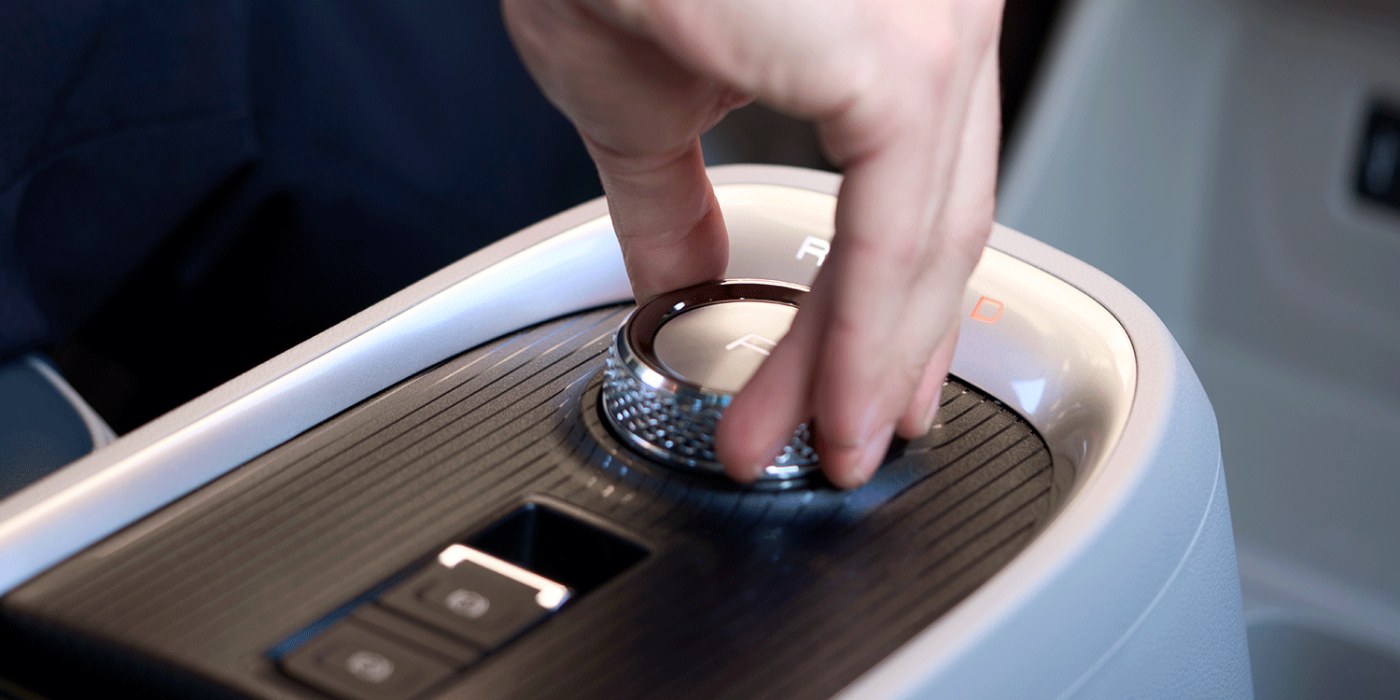
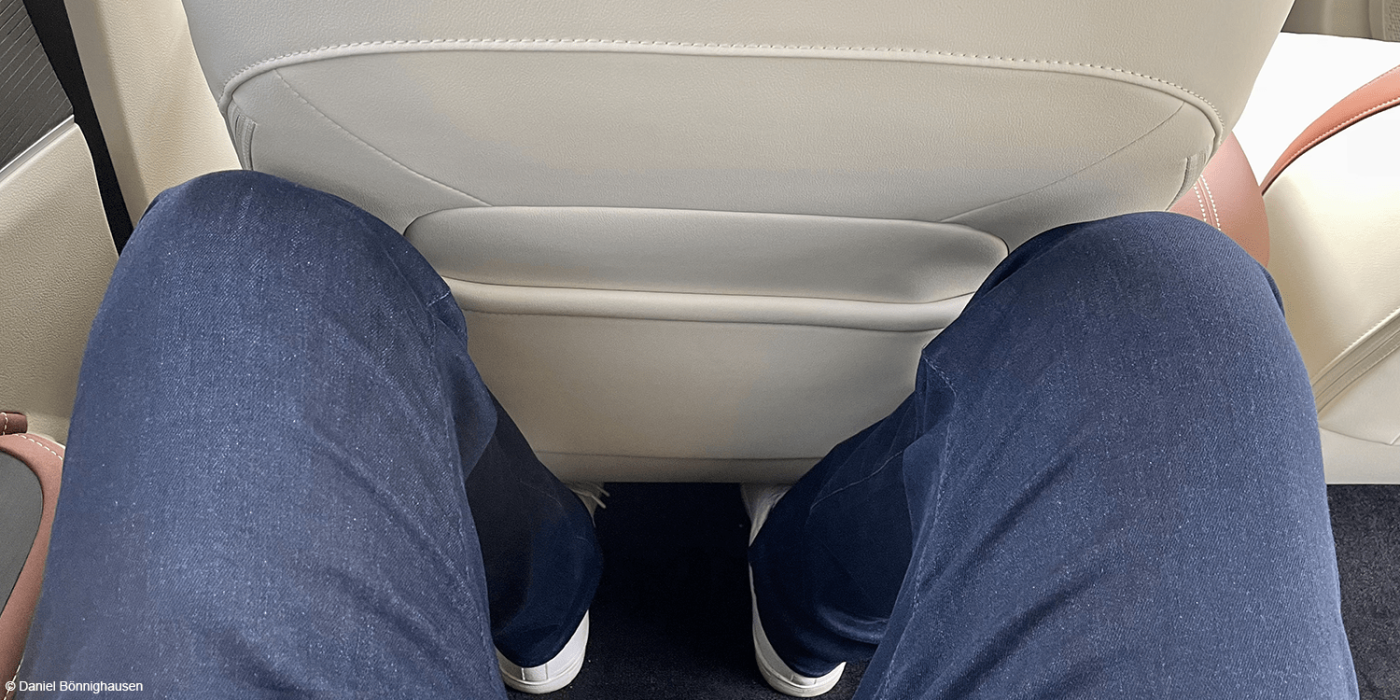
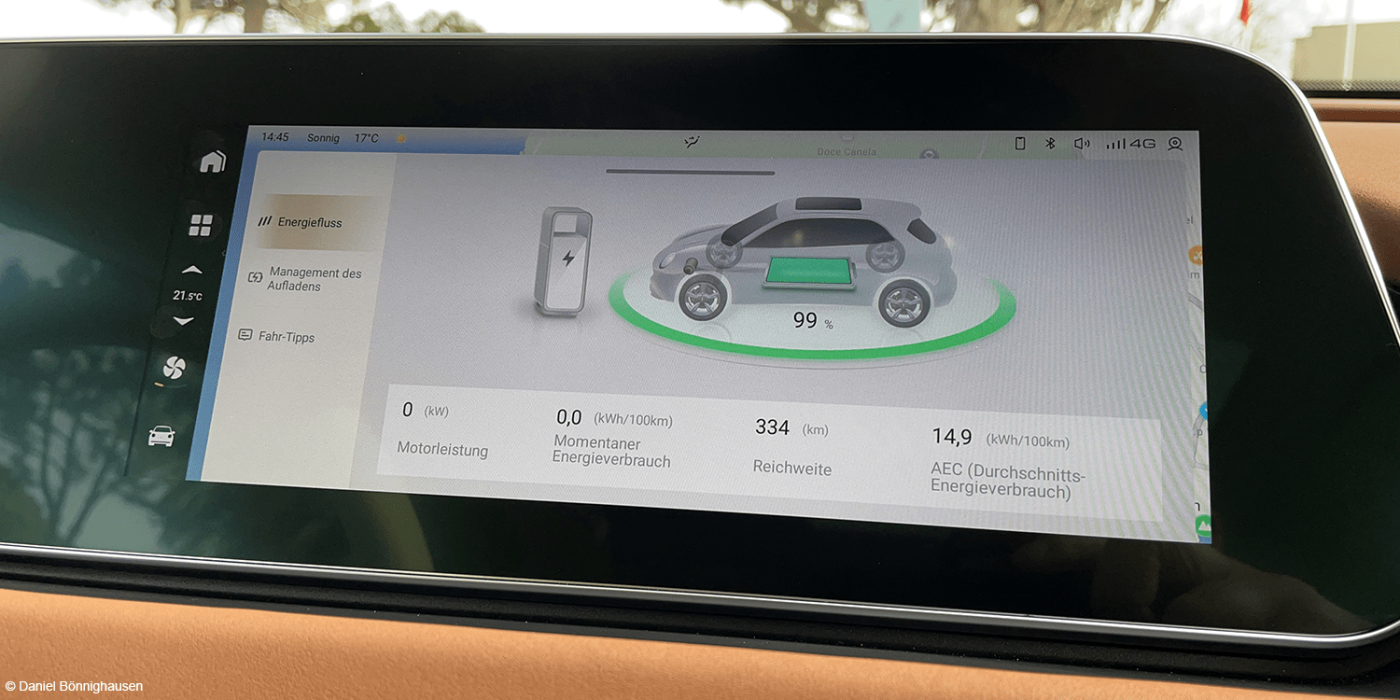
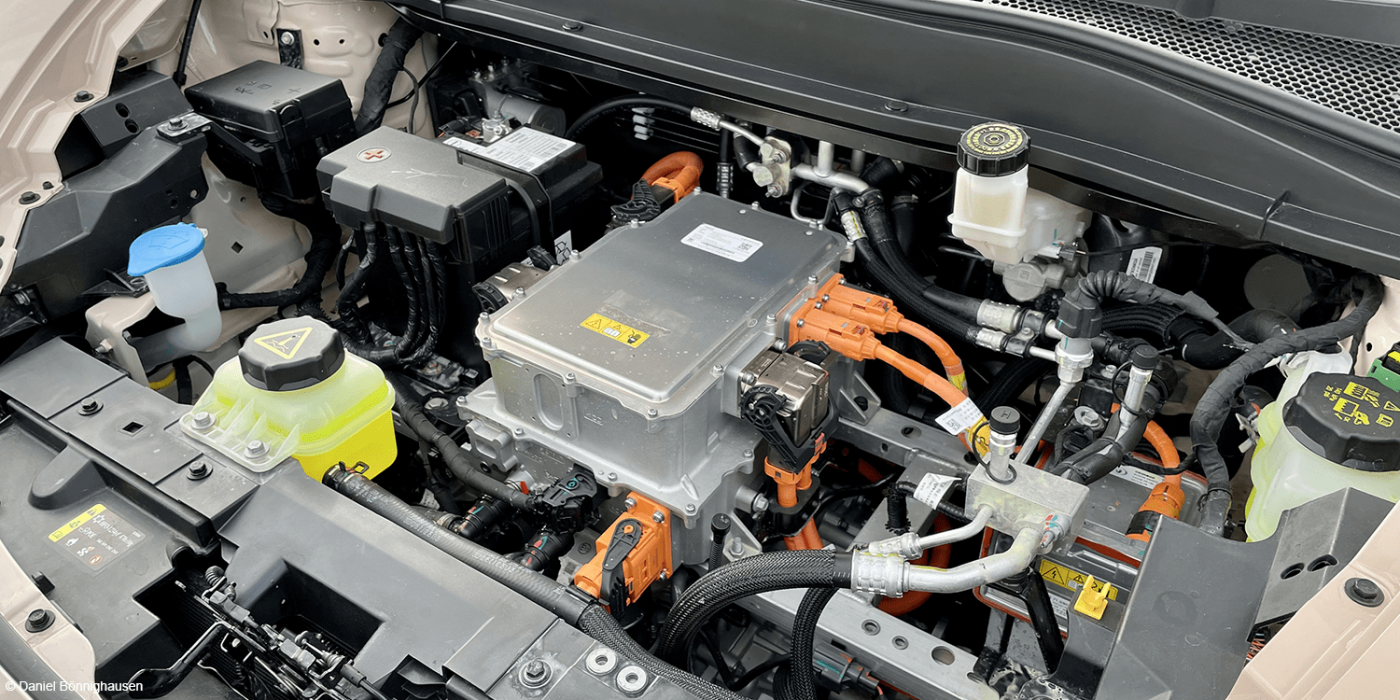
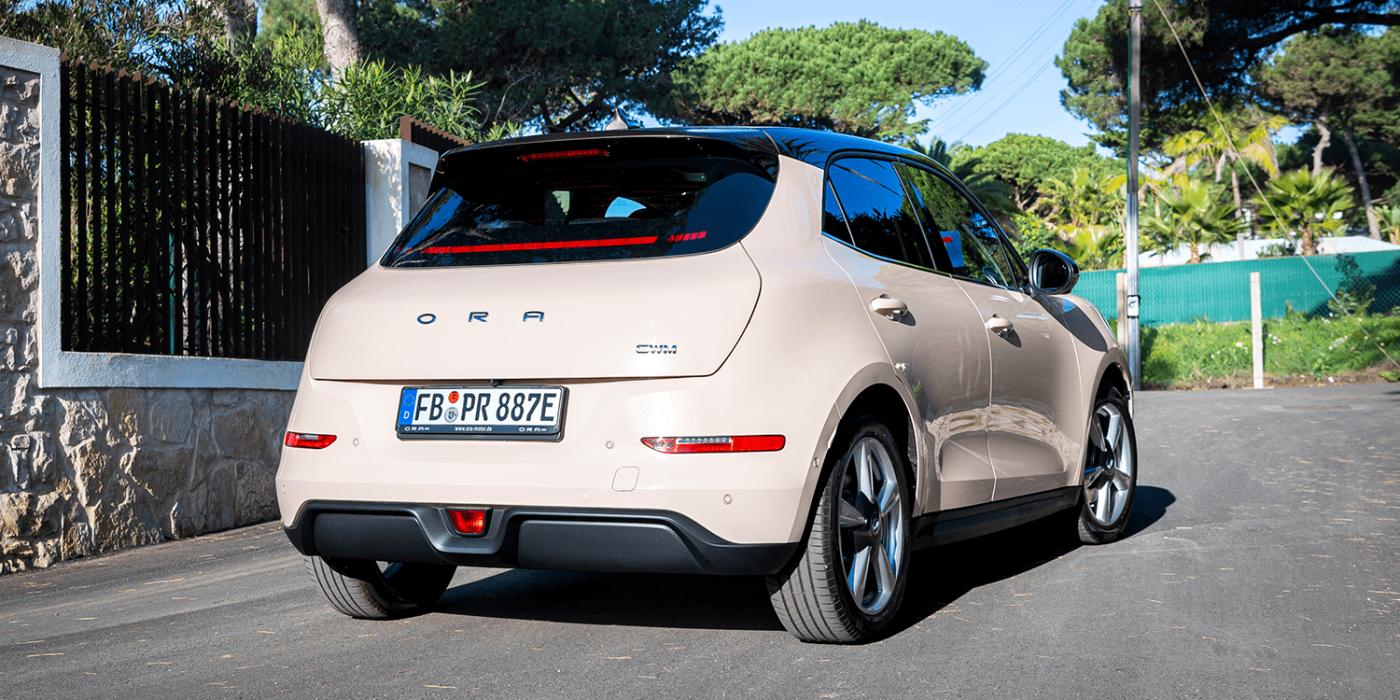
I got my first impression of the performance of the electric machine outside Cascais in the west of Lisbon. The Funky Cat drives lightly. Even if its acceleration from zero to 100 km/h in just over eight seconds doesn’t suggest it, the smooth steering and tight chassis provide enough driving pleasure, taking corners like a lithe cat. Ora has adapted the typical “go-kart feeling” from the Mini Cooper SE to the compact model.
How long the driving pleasure lasts depends on different factors. In the spring temperatures of southern Europe, my consumption values ranged from 14.9 kWh/100 km (city driving with a small proportion of country roads) to 18.5 kWh/100 km (mainly country roads with a small proportion of motorways). After a detailed test, we will provide you with more meaningful values, but the data from the first drive already gave us a pretty good idea.
The factory specification, according to WLTP, is a range of up to 310 kilometres with a small battery, which has a usable energy content of 45.4 kWh. For the large battery with 59.3 kWh (net, installed in our test car), Ora’s Funky Cat manages a range of up to 420 kilometres.
Patience required at the High Power Charger
While the consumption values and possible ranges are standard for this vehicle class, this is not the case regarding charging. Patience is required at a High Power Charger for longer distances. Ora specifies 67 kW as the maximum DC charging power, meaning that a charging process from 15 to 80 per cent takes 48 minutes (43 minutes for the small battery). That is too long for my liking. It should be ten minutes less. But who knows, maybe this will improve with the next update. On the AC side, three-phase charging with eleven kW is possible as an industry standard. In this case, charging from zero to 100 per cent takes 6.5 hours.
Regarding updates, the navigation system displays charging stations, and Ora uses mapping data from Here, but no route planning with charging stops is not yet available. This function should be introduced with one of the next over-the-air updates.
The same applies to Apple CarPlay and Android Auto. When I took the car on our first test drive, this integration wasn’t there yet, but Ora announced that this function should be available this month. In any case, the update policy at Ora, which is much the same as MG Motor and Nio, is more favourable than many other established car manufacturers. Improvements to existing and new functions are promptly incorporated as small updates.
Many assistance systems as standard
I also hope there are updates for fine-tuning individual driving assistants. These need to catch up. For example, the standard cruise control is supposed to brake to a suitable speed in bends but works too roughly. The function of individual assistants was not always immediately obvious. More help is needed from the system or a better gear ratio, which is still a problem in some cases. Drivers can be assumed that this will be worked on quickly, thanks to the over-the-air updates.
Many other assistants are standard, such as distance radar, blind spot warning and a 360-degree camera, all of which provided very good service when we drove the car. The same applies to the lane departure warning system, which worked beautifully. The voice assistance, which can be given a name it then recognises, did not work so beautifully. But it should be able to get used to your pronunciation quickly and thus react less often without being asked. You won’t find this kind of standard feature in this vehicle and price class from other manufacturers.
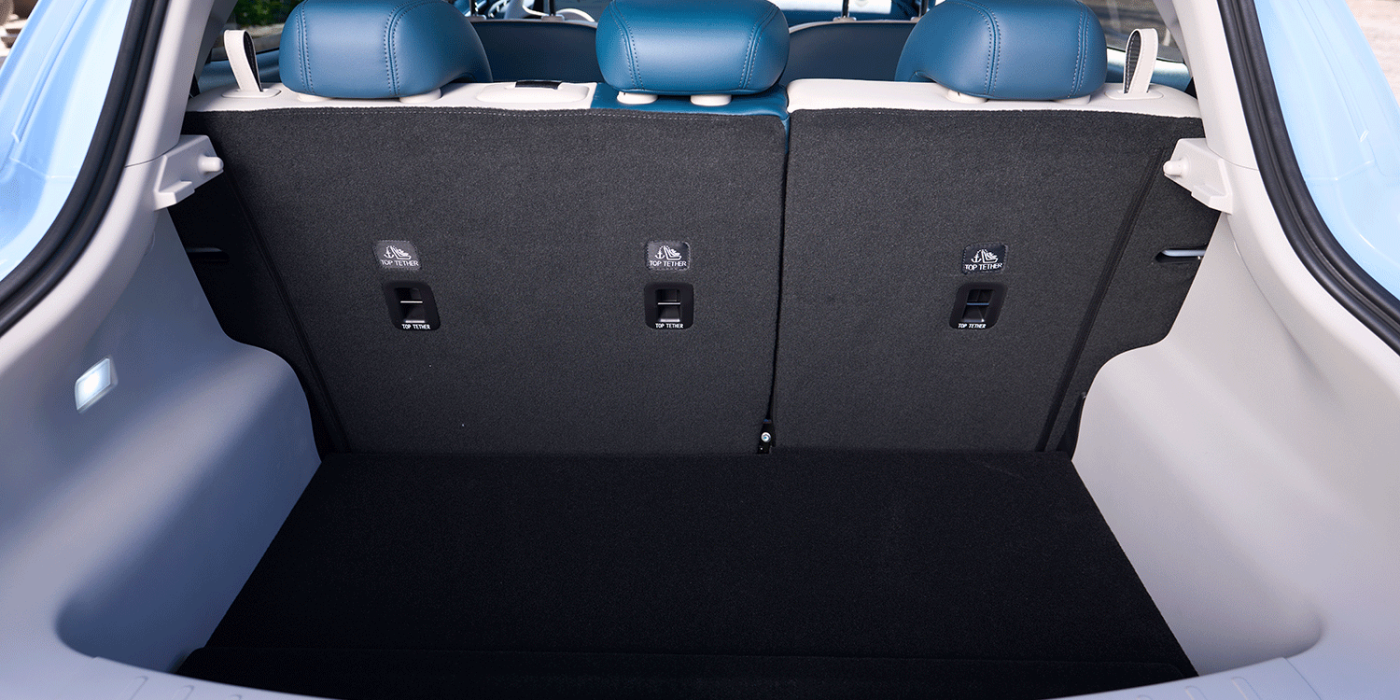
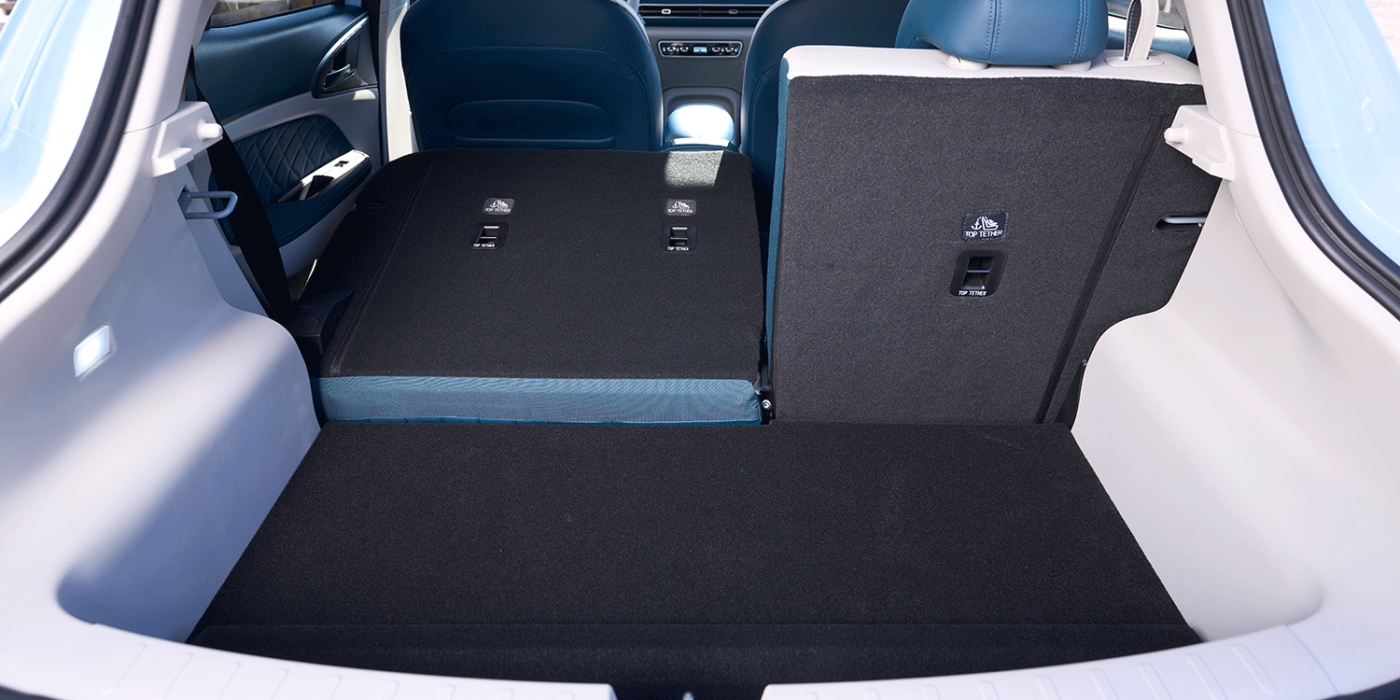
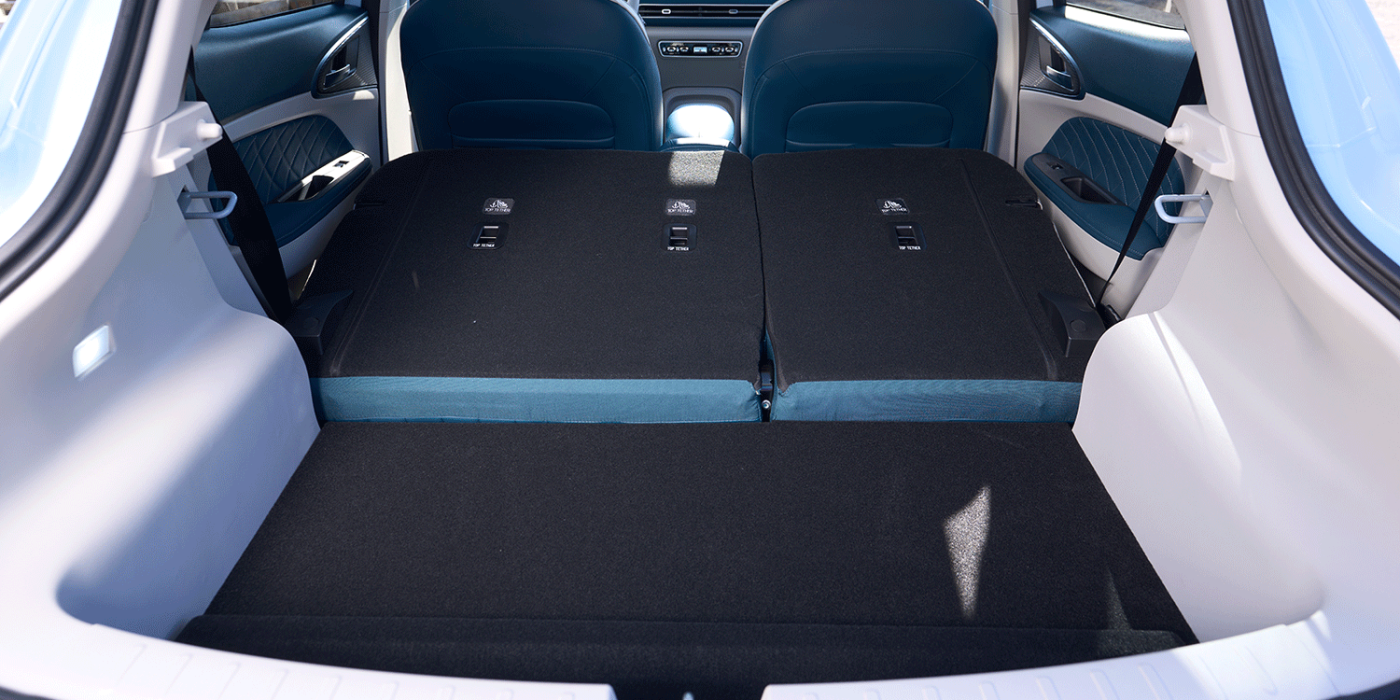
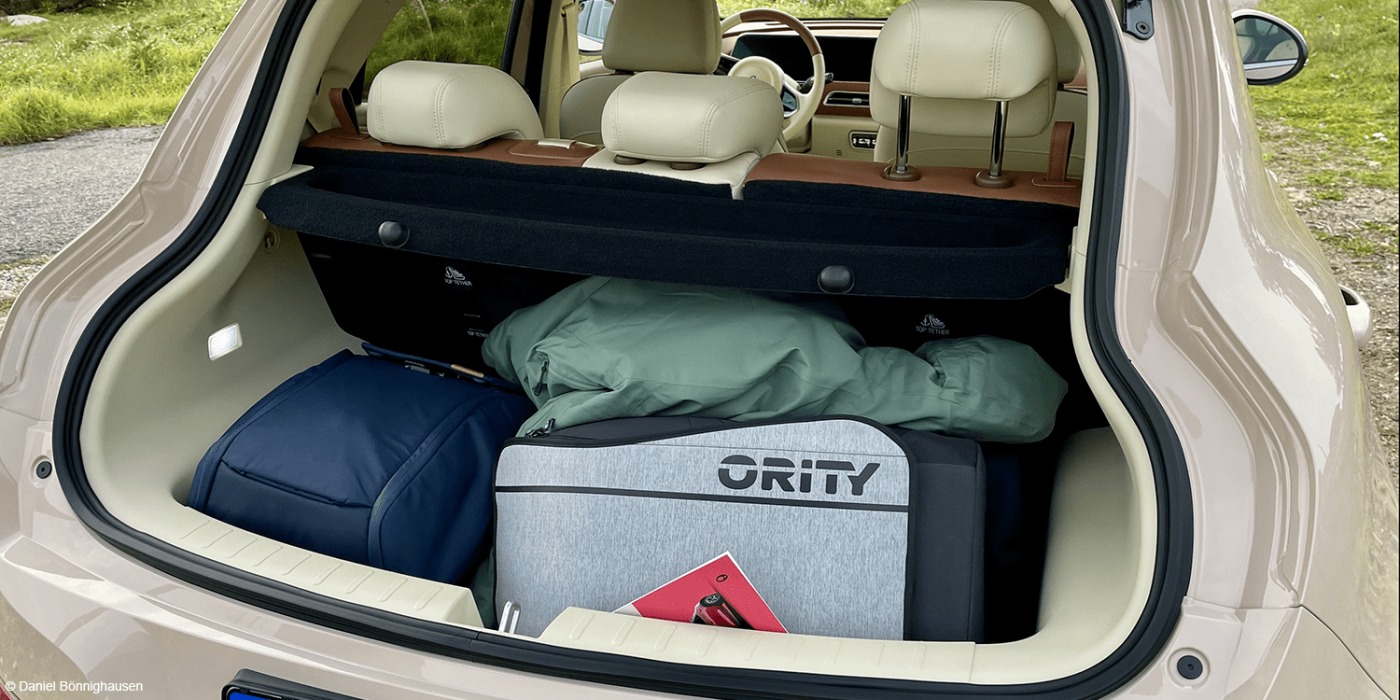
On the other hand, the boot capacity has to be reduced. As comfortable and spacious as the interior may be – for a compact car – the luggage compartment offers little space, with only 228 litres. With the rear seats folded down, there are 858 litres, but not a flat surface. That said, the Mini Cooper SE only has 211 or 731 litres with the seats folded down. Beating both for luggage space is the ID.3, which, even though it’s a similar size to Funky Cat, offers 385 or 1,267 litres.
Conclusion
The Ora Funky Cat is more fun to drive than practical. The “fashion- and lifestyle-oriented target group” fits in well with this. The BMW brand Mini and the Fiat 500 appeal to a similar, if not the same, target group. Although the new brand from China has not yet achieved cult status and probably won’t, thanks to its looks, the model could win many hearts and has what it takes to become a popular vehicle.
The price, however, is a deterrent at first glance. Ora’s base price for a Funky Cat with the small battery is 38,990 euros before subsidies and 44,490 euros for the Cat with a large battery with complete equipment, except the heat pump. The only variety is in the choice of interior and exterior colour. At the same time, looking at other manufacturers and models, the price seems reasonable. There is the current and already ageing Mini Cooper SE at a base price of 37,300 euros, the Fiat 500e with a 42-kWh battery for 34,990 euros or an Opel Mokka-e at a starting price of 40,650 euros. More practicality is certainly offered by a Smart #1, which is already available for 41,490 euros and should appeal to the same customer group due to its design.




2 Comments